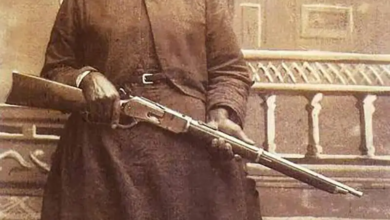Pizza Chain CEO Slams Business Unwilling to Pay Workers ‘a Living Wage.’ There’s Just One Problem.

While a nationwide labor shortage has left many businesses struggling to find workers, some business owners say they are doing just fine.
Michael Lastoria, CEO of &pizza, a restaurant chain in Washington, D.C., told Business Insider that business was booming at the chain’s 50-plus locations, each of which was fully staffed.
The secret, he said, was paying staff “a proper wage.” Lastoria said the chain’s business model involves paying staff $16 an hour, on average, and offering generous benefits. This, Lastoria claims, has allowed &pizza to dodge the labor shortage other businesses are citing as a business hurdle.
“We are living proof that the claims that business owners are making about the impossibility of paying people enough money to live on are false,” Lastoria said. “Higher wages lead to greater consumer spending and greater workforce productivity, things every company benefits from.”
In fact, Lastoria goes so far as to deny that a labor shortage even exists.
“There isn’t a labor shortage, there is a shortage of business owners willing to pay a living wage,” Lastoria says.
A Living Wage, You Say?
Lastoria’s words earned praise from some influencers on Twitter, including internet entrepreneur Dan Price, CEO of the credit card processing company Gravity Payments.
(Price, of course, is the CEO who soared to fame by pledging to pay all his employees a minimum salary of $70,000 while slashing his own $1.1 million salary. What few know is Price made his announcement a month after being sued by his brother, a minority stakeholder in the company, for allegedly “improperly [using] his majority control of the company” to overpay himself at his brother’s expense.)
Pizza chain &pizza:
*Pays $16 an hour
*Offers health care
*Paid time off
*Offered Lyft rides to work in pandemic
*Fully staffed 12 new locations this year and gets over 100 applicants per job openinghttps://t.co/iKcQhsDYVj— Dan Price (@DanPriceSeattle) July 13, 2021
“Compassion is good for business”. Love this. Thank you for caring about people. I wish you continued amazing success.
— Karen Gardner (@sportsmomtn) July 14, 2021
Please expand to west coast! I’d love to support this chain! 😍
— Brooque, RN, BSN (@basicBRS) July 13, 2021
As far as PR goes, Lastoria gets an A+. He was profiled by Business Insider, CBS News, and other media outlets. His economics grade, however, is another story.
First, the notion that &pizza’s wages are uniquely generous is wrong. The minimum wage in the nation’s capital, after all, is $15.20. Considering that Washington, DC has one of the highest costs of living in the US, it’s not unreasonable to assume that &pizza is paying workers what amounts to the market wage of their labor (i.e. the price they’d get in the absence of a wage floor). This is a stark contrast to other parts of the United States. Fifteen dollars in DC translates to roughly $24 in Florida, $25 in Alabama and Tennessee, $26 in New Mexico, and $27 in Louisiana.
Second, Lastoria decries the alleged “shortage of business owners willing to pay a living wage.” But it should be pointed out that &pizza is one of those businesses.
While there is no objective standard to determine what a living wage actually is, MIT has a Living Wage Calculator that allows readers to compute living wages based on the formula created by Dr. Amy K. Glasmeier.
“There isn’t a labor shortage, there is a shortage of business owners willing to pay a living wage.”
Hate to pop your virtue bubble, but you’re not even close to paying them a living wage. pic.twitter.com/iSxYjhBHtJ
— Jon Miltimore (@miltimore79) July 13, 2021
To say that &pizza doesn’t pay its employees a “living wage” is an understatement. The living wage for a single mom with one child is $38.48 in Washington DC. For a single mother with two children, it’s $47.89. Indeed, even for a married couple with just one child, the living wage is $20.69—nearly $5 an hour more than the average pay of Lastoria’s workers. (It’s unclear why Lastoria is having fewer problems hiring workers than other businesses, but it’s most likely attributable to local factors, such as the fact that he’s servicing nine of the twenty wealthiest counties in America.)
Finally, Lastoria’s claim that higher wages increase productivity enough to improve a company’s bottom line—the efficiency wage hypothesis—has problems logically and empirically. First, it implies that companies not currently paying an efficiency wage are willing to take less profit simply to make workers poorer. Moreover, efficiency wages have been shown to reduce employment, similar to minimum wage laws.
Raising Wages By Fiat
Lastoria might see the $16 an hour average wage as exceedingly generous—especially when he compares it to lower nominal wages paid in other parts of the country—but it’s a far cry from a “living wage,” according to the model used by living wage advocates.
I asked Lastoria how he’d respond to those who say restaurants like his should be required to pay each worker a living wage. He didn’t respond.
One would suspect that Lastoria would say basic economics prevent him from paying his workers such a wage, even if he’d very much like to do so. The reality is wages aren’t determined by living wage calculators; they’re determined by labor markets and, more specifically, your labor’s contribution to an employer’s revenue. This explains why some people make more than others, and it can help one better understand inequality (and identify income opportunities).
We all want higher wages, but labor markets are vast and complex. While $16 an hour may sound reasonable or even generous to Lastoria and his customers in D.C., it’s hard to miss the potential disemployment effects of a $30 minimum wage in Louisiana or $26 minimum wage in Florida.
This is precisely why we should resist the impulse to boost incomes by government fiat.
“It would be comforting to believe that the government can simply decree higher pay for low-wage workers, without having to worry about unfortunate repercussions, but the preponderance of evidence indicates that labor is not exempt from the basic economic principle that artificially high prices cause surpluses,” the economist Thomas Sowell has observed. “In the case of the surplus of human beings, that can be a special tragedy when they are already from low-income, unskilled or minority backgrounds and urgently need to get on the job ladder, if they are ever to move up the ladder by acquiring experience and skills.”
Indeed, if lawmakers tried to force Lastoria to pay his workers a living wage, he’d probably be forced to slash compensation in other ways—a common response to minimum wage laws—or face the prospect of closing shop. This would help no one.
Small businesses were ravaged in 2020. Saddling them with more mandates that make it harder to do business is the last thing we should be doing.
As the CEO of a restaurant chain, one would think Lastoria would know this better than most.
The post Pizza Chain CEO Slams Business Unwilling to Pay Workers ‘a Living Wage.’ There’s Just One Problem. was first published by the Foundation for Economic Education, and is republished here with permission. Please support their efforts.



